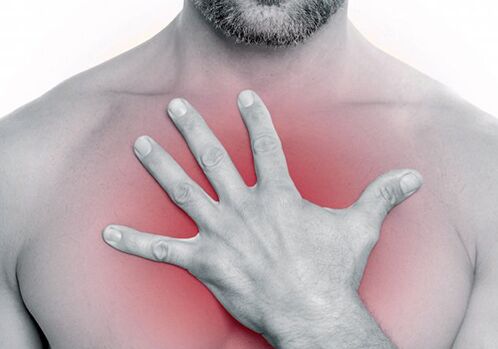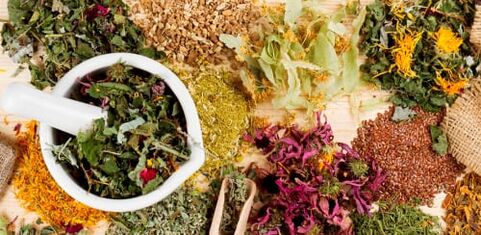
Degenerative and dystrophic changes in the tissues of the vertebrae and intervertebral discs, as well as the clinical symptoms associated with these processes, are called osteochondrosis.Let's look at the main causes and treatments for thoracic spine osteoarthritis.
Causes of osteoarthritis of the thoracic spine
- Hereditary.
Damaged or mutated genes responsible for normal bone development are inherited.Therefore, the risk of osteonecrosis increases significantly if someone in the family has this disease. - Sedentary lifestyle.
In this case, prolonged and excessive load on the spine is important, which leads to compression of the vertebrae and the development of the disease.This occurs more often in people who work on computers and among drivers. - Vascular disease.
Any disease of the vessels supplying blood to the spine and causing insufficient supply of nutrients to the vertebral tissues leads to the appearance of degenerative and dystrophic changes in them. - Metabolic disorders in the body.
Typically, diabetes leads to changes in blood vessels that disrupt tissue nutrition.In addition, direct changes in vertebral tissue can occur in cases of disorders of phosphorus-calcium metabolism, pathologies of the thyroid and parathyroid glands, as well as diseases of the adrenal cortex. - Infection and poisoning.
Inflammatory processes in the tissues of the vertebrae and intervertebral discs caused by viruses, bacteria or the action of their toxins can also lead to the development of osteoarthritis. - Overweight.
The presence of constant excessive load on the spine leads to compression of the intervertebral discs with the subsequent development of processes leading to osteoarthritis. - Poor nutrition.
Lack of trace elements (for example, calcium), lack of vitamins (D3) can also lead to disorders of metabolic processes in the body and the development of pathology of bone and cartilage tissue. - Age-related changes in bone and cartilage tissue.
With age, degenerative changes occur in the thoracic spine, leading to compression of the intervertebral discs.In old age and old age, the muscular framework of the spine also weakens. - Thoracic spine injury.
Bruises and fractures of the vertebrae due to falls or auto injuries are not uncommon.At the same time, anatomical changes in the vertebrae and surrounding tissues are the direct cause of the development of the pathological process, which causes osteoarthritis. - scoliosis
“School” pathology, which develops in children of educational institutions that do not use health-saving technology, occurs mainly in the thoracic spine.The curvature of the spine significantly changes the load on each spinal segment, causing the development of osteonecrosis. - Sports and occupational hazards.
Sports stress (for example, weightlifting), as well as work associated with lifting heavy objects, frequent changes in body position (rotation, flexion and extension, jerky movements) can also cause persistent pathological changes in the spine.In addition, prolonged exposure to uncomfortable positions when standing, sitting, lying, lifting and carrying heavy objects or when performing other work, which increases pressure on intervertebral discs and load on the entire spine, can also lead to osteoarthritis. - Other etiological factors and risk of developing thoracic spondylosis.
Excessive stress on the spine is associated with foot diseases, as well as with wearing uncomfortable shoes, high heels and pregnancy in women, the cessation of regular training in professional athletes and, finally, with nervous tension and stressful situations.
Symptoms of osteoarthritis of the thoracic spine
All symptoms of the disease can be divided into reflex and compression.
Reflex symptoms
The mechanism of their appearance is to stimulate the receptors of the ligaments between the vertebrae, the capsules of the joints between the vertebrae and the receptors of the intervertebral disc.Irradiation (spread) of stimulation to adjacent segments of the spinal cord can lead to the appearance of various symptoms.
Here are the main causes: chest pain, abdominal pain or heart pain, chest muscle tension, vegetative symptoms from internal organs.The pain is always sharp, described by patients as a stab from a dagger.The pain location is the area between the shoulder blades, the pain can spread to the heart and sternum.
The patient may even have difficulty moving or taking a deep breath.Reflex symptoms in thoracic spondylosis are much more common than compression symptoms.
Compression symptoms
Compression symptoms of osteochondrosis in the thoracic spine are caused by nerve roots being compressed or stretched in the area exiting the intervertebral foramen.The main causes are: symmetrical muscle weakness in both legs, loss of sensation in them, "clear" pain in the back and chest.The pain feels like "shooting", felt inside the chest, in the abdomen, and intensifies when moving, bending, coughing, sneezing, laughing.A "crawling" feeling, numbness and tingling appears.As the pathology develops, movement disorders and muscle atrophy may appear.Muscle tone increases, sensitivity in the lower limbs decreases, and urination disorders may appear.
Other autonomic symptoms of osteonecrosis of the thoracic spine
Autonomic symptoms in osteoarthritis appear because nerve fibers coming from the thoracic spine contain autonomic neurotransmitters;irritation or violation of these fibers may be accompanied by autonomic symptoms.The main causes are: peeling and dry skin in the compressed nerve area, local sweating and temperature regulation disorders (also according to the nerve area), brittle nails on the feet, pain simulating pathology of the gastrointestinal tract (gastritis, gastric ulcer, cholecystitis), lower back pain, heart attack.
Treatment of osteoarthritis of the thoracic spine
Treatment of right thoracic spine osteoarthritis is comprehensive (with a combination of pharmacological and non-pharmacological methods), individual and systemic.
Drug treatment for thoracic spine osteoarthritis
The main goal of these methods is to eliminate pain, muscle tension, improve microcirculation and tissue nutrition.For this purpose, non-steroidal anti-inflammatory drugs are used to reduce inflammation, eliminate pain and muscle tension.These funds are prescribed for an average of 7-14 days.Application of local anesthesia is prescribed.In cases where non-steroidal analgesics are not effective enough, analgesic mixtures are used.This mixture is administered intravenously with saline or glucose.Paravertebral blockade provides rapid pain relief when the analgesic is injected into the soft tissue of the perivertebral area.
To relieve pain from osteoarthritis of the thoracic spine, irritating and distracting ointments are used topically.
Muscle tension is relieved with medications such as muscle relaxants.
To normalize blood circulation and improve tissue nutrition, antiplatelet drugs and nicotinic acid are used.
They also use drugs that improve metabolic processes in intervertebral discs and joints - chondroprotectors.
Non-drug treatments
Diet for osteonecrosis of the thoracic spine.Completely exclude from the diet: salt, hot spices, preparations using vinegar and salt, semi-finished products, sugar (can be replaced with honey), coffee and carbonated drinks.Allowed: beans, eggplant, cheese, dairy products, lettuce, cabbage, cottage cheese, bananas, liver, carrots, melons, seafood, cereals, fresh vegetables and fruits, herbs, nuts and berries.
The complex treatment program for osteoarthritis of the thoracic spine includes: manual therapy, classical massage, acupressure, partial reflex massage, physiotherapy, torsional techniques (stretching), acupuncture, swimming, physiotherapy methods (electrophoresis, ultrasound, amplification, mobile current, mud therapy and other methods, etc.).
Traditional methods of treating cervical spondylosis

If osteochondrosis in the thoracic spine becomes more severe, treatment under close supervision of a physician is indicated.Home and folk remedies should never be used blindly without a doctor's permission.The following may be used as complementary treatments to alleviate the patient's condition:
- Decoctions and decoctions.
- Tincture from lingonberry leaves.Take 1 tablespoon of Ganoderma leaves, pour 0.25 liters of boiling water and incubate for 2 hours.Drink half a glass in the morning and evening for 3 weeks.
- Decoction from parsley roots.Grind 50 g of parsley root, add 0.5 liters of water and cook over low heat for an hour and a half.Take 1 tablespoon morning and evening for 3 weeks.
- Tincture of nettle and honey.Freshly picked nettles squeeze the juice, mix it with honey and medical alcohol in equal parts.Leave in a cold place for 14 days and take a spoonful in the morning on an empty stomach for 2 weeks.
- Yarrow tincture with mint, licorice and calendula.Mix a spoonful of yarrow and 2 spoons of mint, licorice and calendula, then pour 1 liter of boiling water and incubate for 7-8 hours.Take 50 ml 3 times a day for 3 weeks.
- Rub.
- Radish and honey soaked in vodka.Grind the radish, mix with honey in equal parts and add 50 ml of vodka.Use this preparation to rub into the painful area.
- Lard and hops.Mix a spoonful of melted and cooled lard to room temperature with the same amount of ground hops.Rub the resulting composition into the affected area.
- Lard and propolis.Melt 150 g of lard, add 30 g of propolis and mix well.It is best to rub the skin at night.After the procedure, you should wrap your back with a warm cloth.
- Ginger and garlic.Fry chopped ginger and garlic in butter until a homogeneous mixture is obtained.Rub the resulting mixture on the painful area.
- Oregano leaves with oil.Mix 1 tablespoon of oregano leaves and 0.2 liters of olive oil.Leave the mixture for 10 hours, then strain and rub on painful areas of your back.
Prognosis for osteoarthritis of the thoracic spine
The prognosis is generally favorable, complications of this form of the disease are rare.It is worth paying attention to timely diagnosis of the disease, exclusion of other pathologies of the chest organs, as well as adequate treatment and adequate prevention of exacerbations of osteonecrosis.



























